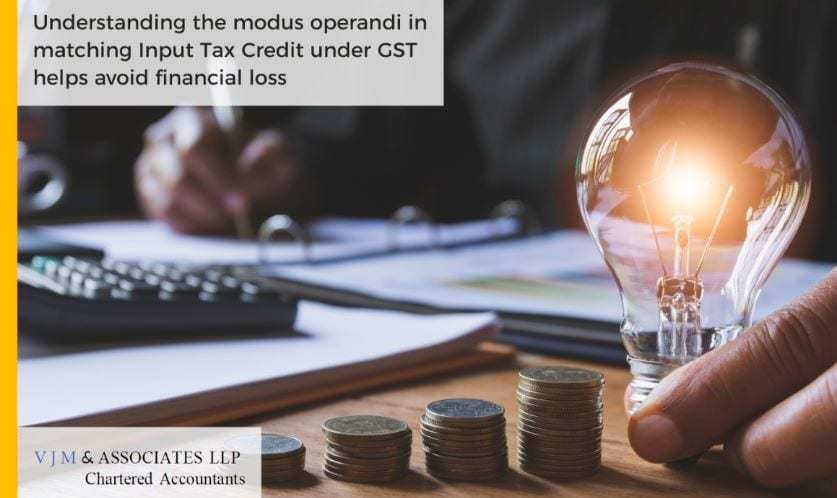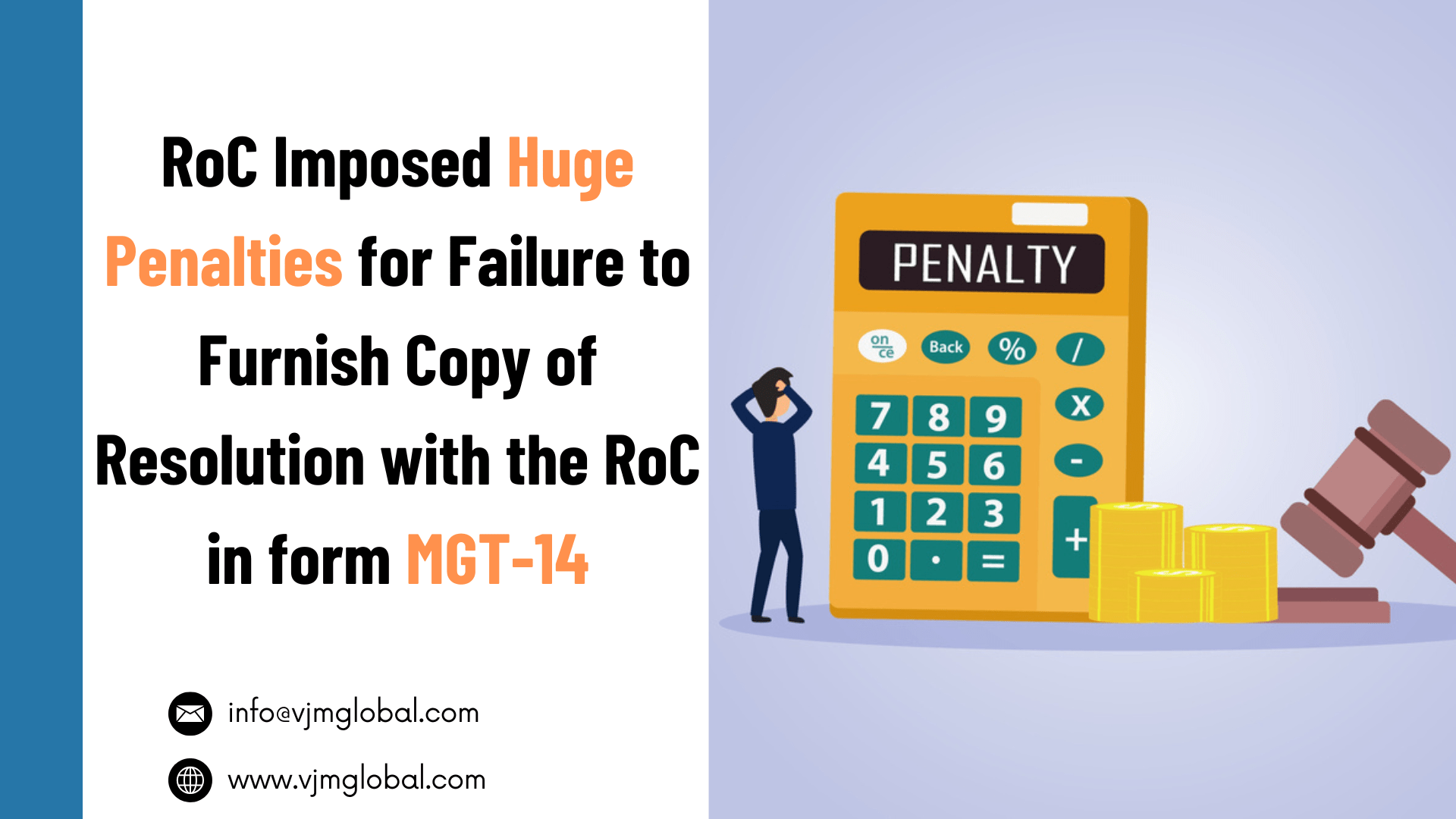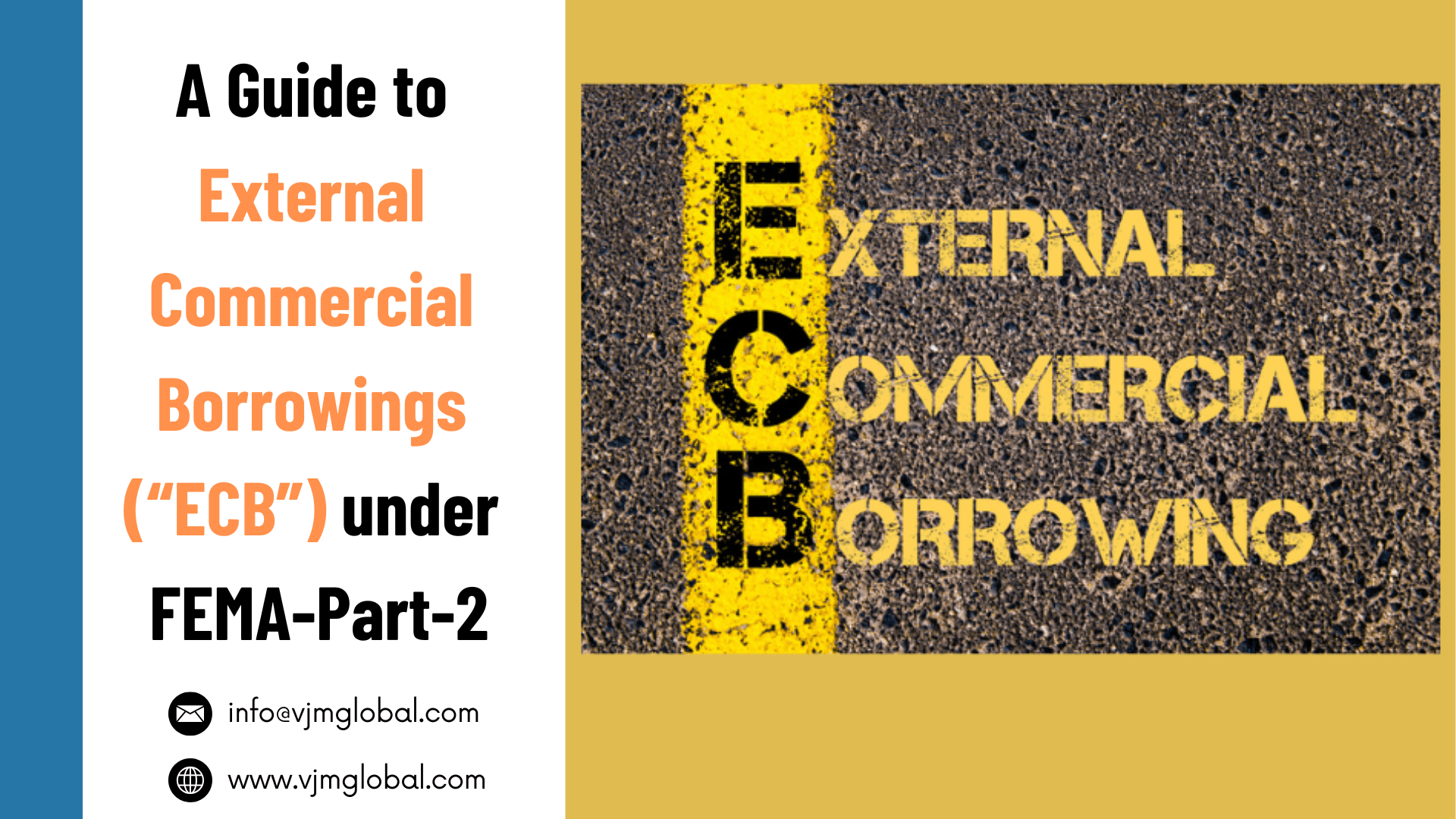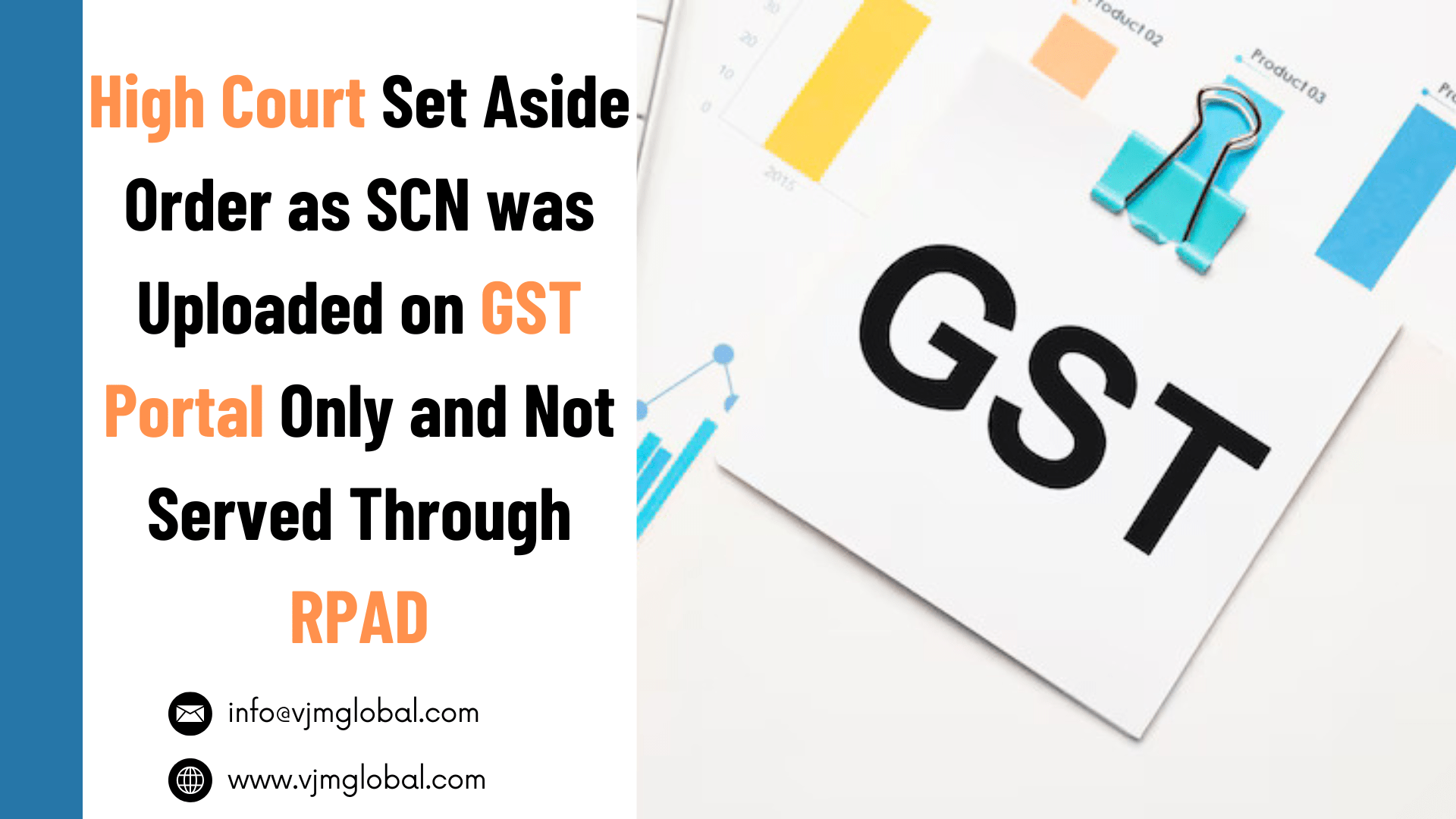Goods and Service Tax (“GST”) is a value addition based tax, i.e., tax should be paid on value added only and therefore, is it framed on two fundamental pillars, i.e., output tax liability and Input Tax Credit (“ITC”).
With introduction of GST, government wanted to overcome all possible issues confronted by department and taxpayer in pre-GST regime. One of crucial issue was to check matching of Input Tax credit claimed by taxpayer, such as, under Service Tax, Central Excise or Value Added Tax (“VAT”) department was not able to verify correctness of ITC claimed by taxpayers without manual intervention.
Considering such shortcoming, GST was designed on concept on online automatic matching of all Input Tax credit claimed on inward supplies with corresponding outward supply reported by supplier on one-on-one basis.
Before getting into procedure of matching of ITC under GST, let us first understand about few basic GST return forms:
| GST Return Form | Details to be furnished | Due Date |
| GSTR-1 | Details of Outward Supply | Monthly-10th of month following the month to which GSTR-1 relates. Quarterly– End date of the month following the quarter to which return pertains |
| GSTR-2A | Details of Auto-drafted supplies | Starts auto-populating after due date of filing of GSTR-1 |
| GSTR-2 | Details of Inward Supplies | Yet to be implemented (Theoretically, GSTR-2 is to be filed on monthly basis by 15th of month following the month to which GSTR-2 relates) |
| GSTR-3 | Monthly Return | Yet to be implemented (Theoretically, GSTR-3 is to be filed on monthly basis by 20th of the month following the month to which GSTR-3 relates) |
| GSTR-3B | Summary Return | Monthly-20th of the month following the month to which GSTR-3B pertains |
Provisions related to matching of input tax credit and credit notes and consequential actions thereafter are given under Section 42 and 43 of Central Goods and Service Tax Act (“CGST Act, 2017”) read with Rule 69 to 77 of Central Goods and Service Tax Rules, 2017 (“CGST Rules, 2017).
Summary table of key provisions provided under CGST Act, 2017 and CGST Rules, 2017 related to Matching of Input tax credit:
- Section 41: Claim of input tax credit and provisional acceptance thereof
- Section 42: Matching, reversal and reclaim of input tax credit.
- Rule 69: Matching of claim of input tax credit
- Rule 70: Final acceptance of input tax credit and communication thereof
- Rule 71: Communication and rectification of discrepancy in claim of input tax credit and reversal of claim of input tax credit
- Rule 72: Claim of input tax credit on the same invoice more than once
- Section 43: Matching, reversal and reclaim of reduction in output tax liability.
- Rule 73: Matching of claim of reduction in the output tax liability
- Rule 74: Final acceptance of reduction in output tax liability and communication thereof
- Rule 75: Communication and rectification of discrepancy in reduction in output tax liability and reversal of claim of reduction.
- Rule 76: Claim of reduction in output tax liability more than once
Now let’s get into details of modus operandi of matching of ITC under GST and what all consequential actions are required:
1. Provisional acceptance of ITC (Section 41)
As per Section 41 of CGST Act, 2017, every taxpayer is eligible to claim ITC in his return on self-assessment basis and GST portal will accept such ITC on provisional basis (i.e. subject to further verification). Such ITC will start appearing in his electronic credit ledger after filing of GSTR-3B.
2. Process of Matching of Input tax credit (Section 42 & 43)
2.1 Online Matching of Input Tax Credit (Inward Supplies and Credit Notes) (Section 42 & Section 43)
As per section 42 of CGST Act, 2017, details of all inward supplies reported by the recipient in his GSTR-2 will be matched with while Matching of Input tax credit:
- Corresponding details of all outward supplies reported by corresponding supplier in his GSTR-1 of same tax period or any preceding tax period or
- IGST paid on goods imported by recipient under section 3 of Custom Tariff Act, 1975.
- ITC will also be matched for duplication of claim.
Similarly, as per Section 43 of CGST Act, 2017, details of every credit note reported by supplier shall be matched with the corresponding reduction of ITC by recipient in his GSTR-2 of same tax period of subsequent tax period. System will also check recording of credit note for duplication.
2.2 Basis of matching of Input Tax credit on inward supplies and Credit notes (Rule 69)
As per Rule 69 of CGST Rules, 2017, System will match inward supplies under Matching of Input tax credit on the following basis:
- GSTIN of Supplier
- GSTIN of recipient
- Invoice Number or Debit Note Number
- Invoice or Debit Note date
- Tax Amount
As per Rule 73 of CGST Rules, 2017, credit note information will match considering following data:
- GSTIN of supplier
- GSTIN of recipient
- Credit Note number
- Credit Note date
- Tax Amount
2.3 Time prescribed for online matching process (Rule 69 and Rule 73)
Both in case of inward supplies and credit notes, system will commence reconciliation after due date of furnishing of GSTR-3. However, if due date of filing of GSTR-1 and GSTR-2 is extended, then date of matching of inward supplies and credit notes will get extended accordingly.
Further, commissioner may also extend such date on recommendation of GST Council.
2.4 Matched Invoices and Credit Notes (Rule 69 & Rule 73)
Input Tax Credit: Explanation 1 to Rule 69 of CGST Rules, 2017 specifies that where input tax credit is claimed with respect to those invoices which are accepted by recipient from GSTR-2A without any amendment, then such invoices shall be considered as matched provided supplier has filed valid GSTR-1.
Invoices shall be considered as matched where ITC claimed by recipient is equal to or less than output paid by supplier
Reduction of output tax liability: Similarly Rule 73 states that if reduction in Output tax liability is claimed based on such credit notes which are reported by supplier in GSTR-1 and accepted by recipient in GSTR-2 without any modification then such credit notes shall be considered as matched.
A credit note shall be considered as matched while Matching of Input tax credit where output liability discharged by the supplier on the original invoice, after setting off GST reversal on credit notes, is more than or equal to net ITC claimed by the recipient on such invoice in his GSTR-2.
E.g. A raises Invoice of INR 100 with GST @ 18% INR 18 to B. Subsequently, A raises a credit note against such invoice of INR 20 with GST of INR 3.6. Accordingly, such credit note shall be considered as matched if B claims ITC on such invoice of INR 14.40 (18-3.6) or less.
2.5 Communication about matched Invoices (Rule 70 & 74)
Input Tax Credit (Rule 70): Final acceptance of claim of ITC shall be made available electronically to the recipient in form GST MIS-1 through common portal.
Credit Note (Rule 74): Communication about acceptance of matched credit notes shall be made available electronically to the supplier in form GST MIS-1 on common portal.
3. Mismatched or Duplicate Invoices/Credit Notes
3.1 Communication of Mismatched or Duplicate Invoices/Credit Notes (Section 42(3) & (4) and Section 43(3) & (4) read with Rule 71, 72, 75 & 76)
Input Tax Credit (Section 42(2) & (3) read with Rule 71 & 72): If ITC claimed by the recipient in respect of an inward supply reported in GSTR-2 is in excess of tax declared by the supplier in his GSTR-1 or supplier fails to disclose such invoice in his GSTR-1 then such invoice shall be considered as mismatched while performing Matching of Input tax credit.
Communication about such discrepancy shall be made electronically to the recipient in form GST MIS-1 and to the supplier in form GST MIS-2 through common portal. Duplication of ITC shall be communicated to recipient through GST MIS-1.
Reduction in Output tax liability (Section 43(3) & (4) read with Rule 75 & 76): Similarly if reduction made by supplier in output tax liability on account of credit note exceeds corresponding reduction in ITC by recipient against such credit note or recipients fails to disclose such credit note then such credit note shall be considered as mismatched.
Communication about discrepancy shall be made electronically to the supplier in form GST MIS-1 and to the recipient in form GST MIS-2. Duplication of credit note shall also available to supplier in form GST MIS-1.
Communication in form GST MIS-1 and GST MIS-2 shall be made on common portal on or before the last date of the month in which matching has been carried out.
3.2 Mismatched Invoice/Credit Note-Further action required (Rule 71 & 75)
Rectification of discrepancy in case of ITC Mismatch on inward supplies (Rule 71):
- Rectification by supplier: A supplier to whom communication is made about mismatch of ITC in form GST MIS-2 may make suitable rectification with respect to such invoice in GSTR-1 of the month in which such discrepancy is communicated.
- Rectification means correcting or adding details of invoices so that it get matched with details furnished by recipient
- Rectification by Recipient: In response to communication made in form GST MIS-1, recipient may carry out suitable rectification in his statement of inward supplies for the month in which discreoancy is communicated either through deleting such invoice or correcting it.
Rectification of discrepancy in reduction of Output tax liability claimed through credit note (Rule 75):
- Rectification by Supplier: Supplier to whom mismatch is communicated through form GST MIS-1 may make suitable rectification in his GSTR-1 of the month in which discrepancy is communicated.
- Rectification by supplier means deleting or correcting the details of outward supply.
- Rectification by Recipient: Recipient to whom mismatch is communicated through form GST MIS-2 may make suitable rectification in his GSTR-2 of the month in whicd discrepancy is communicated.
- Rectification by recipient means adding or correcting the details of his inward supplies.
3.3 Penal Action-In case of no rectification (Rule 71 & 75)
Input Tax Credit: If discrepancy is not rectified then amount to the extent of discrepancy will be added to the output tax liability of the recipient in his GSTR-3 for the month following the month in which discrepancy is communicated.
Recipient will be liable to pay interest on amount so added at the rate specified in Section 50(1) from the date of availement of credit till the date of addition in output tax liability.
Reduction in Output Tax Liability: If discrepancy is not rectified then amount to the extent of discrepancy will be added to the output tax liability of the supplier in his GSTR-3 of the month following the month in which discrepancy is communicated.
Supplier will be liable to pay interest on amount so added at the rate specified in Section 50(1) from the date of deduction of output tax liability till the date of addition in output tax liability.
4. Reclaim-Input tax credit or reduction in output tax liability (Section 42(7), 42(9), 43(7) & 43(9))
Reduction from Output Tax liability
Reduction on account of inward supply invoices: If supplier declares the details of such invoice or debit note in his GST return of any subsequent period (as per GST Law provisions) then recipient will be eligible to claim deduction from his output tax liability on account of such invoice.
Reduction on account of Credit note: If recipient declares the details of such credit note in his valid return of any subsequent period (As per GST Law provisions) then supplier will be entitled to claim reduction from his output tax liability on account of such credit note.
4.1 Refund of Interest (Section 42(8), 43(8) Read with rule 77)
Where input tax credit or reduction in output tax liability is reclaimed after rectification by corresponding party then interest paid at the time of reversal will be refunded to the recipient or supplier, as the case may be. However, amount of interest to be refunded shall not exceed the amount of interest paid by him.
Such interest shall be claimed by the person in his FORM GSTR-3 and subsequently, it shall be credited to his electronic cash ledger in FORM GST PMT-05. He may use such amount for payment of any future liability towards interest.
5. Practicel Aspect
Please note that entire matching process is based on Form GSTR-1, GSTR-2 and GSTR-3. However, due to technical glitch only GSTR-1, GSTR-2A and GSTR-3B have been made available for filing purpose. Accordingly, entire matching process has not made live yet.
Read latest judgement onFailure to File GST Return in Time Can Mean Interest On Entire Gross Tax Liability
Learn more about new GST return system GST Returns | Normal | Sahaj | Sugam | All about New GST Returns













